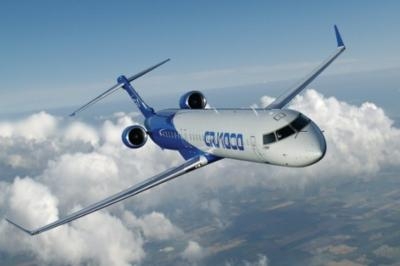Market Forecast Covers The 60- To 150-Seat Segment
Bombardier Commercial Aircraft’s 2017-2036 Market Forecast, covering the 60- to 150-seat segment, shows that the Asia-Pacific region, which Bombardier defines as Asia without Greater China, is expected to undergo impressive growth over the next 20 years.

This region is expected to take delivery of 2,050 aircraft, or 16 per cent of a worldwide market for 12,550 aircraft valued at $820 billion U.S. Asia-Pacific deliveries should consist of 1,050 large regional aircraft (50 to 100 seats) and 1,000 small single-aisle aircraft (100 to 150 seat).
“Asia-Pacific region is the home of the fastest growing economies. Strong GDP growth and a booming middle class should drive passenger traffic numbers to triple in the next 20 years,” said Francois Cognard, Vice President, Sales, Asia-Pacific, Bombardier Commercial Aircraft. “Bombardier aims to build upon its strong foundation in Asia-Pacific. Due to the demand for more frequencies and more city pairs to increase connectivity between smaller communities, there is a great opportunity to continue to support the expected growth with high-performing regional and small single-aisle aircraft.”
The drive for domestic and regional connectivity means that the fastest traffic growth in the region would be seen from small and medium sized cities with challenging airports. This is creating an increased number of point-to-point routes where the traffic is insufficient to allow economical operation of a larger single aisle aircraft. Thus, the increasing demand for high-performing regional and small single-aisle aircraft.
In the region, over 60% of all routes flown today have demand for less than 150 passengers per day. The forecast says that by 2036, intra-regional traffic will account for 80 percent of all Asia-Pacific demand, with the majority of passengers taking short haul flights of under 500 nautical miles.
Over 40 operators are flying or will soon be flying a total of 330 Bombardier regional and small single-aisle aircraft in the region and 27 of these operators fly more than 260 Q Series turboprops. Bombardier’s Q400 aircraft is the only turboprop that can seat up to 90 passengers. SpiceJet is the launch customer for the 90-seat configuration, having placed an order for up to 50 of this type to support regional connectivity in India. Nok Air and Philippine Airlines also operate the Q400 in a high-density 86-seat configuration.
There are 50 CRJ Series aircraft already flying in Asia-Pacific with 13 operators, such as IBEX Airlines of Japan. Recently, many start-up airlines in Asia-Pacific have selected the CRJ200 as the right aircraft to commence operations with. These include Zoom Air of India, Shree Airlines & Saurya Airlines of Nepal, and Air Pohang of Korea. Globally, 68% of all CRJ200 operators have gone on to operate larger CRJ700/900/1000 aircraft.
Bombardier developed its all new C Series aircraft, to fill an emerging 100- to 150-segment between large regional jets and large single-aisle aircraft. The launch customer for the C Series in Asia was Korean Air, who ordered 10 CS300 with 10 options. Korean Air have taken delivery of two CS300 aircraft to date, and had their first revenue flight from Seoul to Ulsan on January 20, 2018.
(Image provided with Bombardier news release)
 Unfortunate... ANN/SportPlane Resource Guide Adds To Cautionary Advisories
Unfortunate... ANN/SportPlane Resource Guide Adds To Cautionary Advisories ANN FAQ: Turn On Post Notifications
ANN FAQ: Turn On Post Notifications ANN's Daily Aero-Term (04.29.24): Visual Approach Slope Indicator (VASI)
ANN's Daily Aero-Term (04.29.24): Visual Approach Slope Indicator (VASI) ANN's Daily Aero-Term (04.28.24): Airport Marking Aids
ANN's Daily Aero-Term (04.28.24): Airport Marking Aids ANN's Daily Aero-Linx (04.28.24)
ANN's Daily Aero-Linx (04.28.24)



